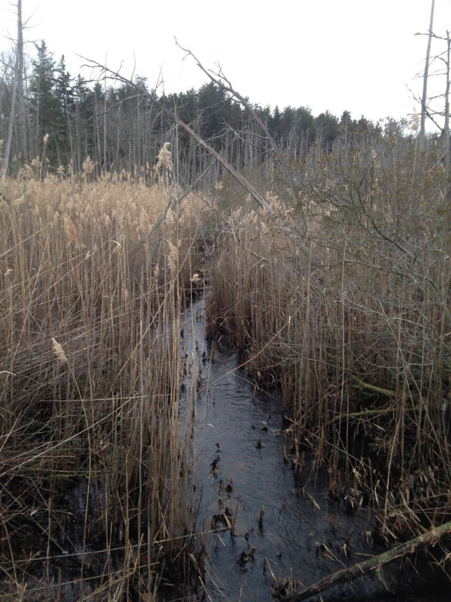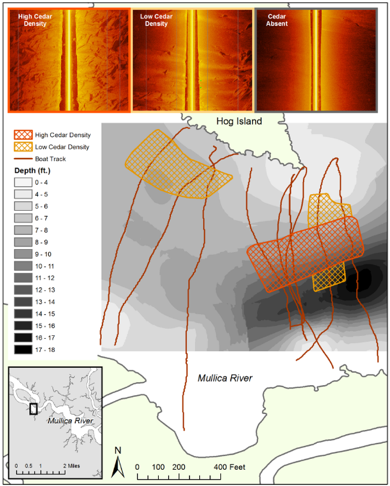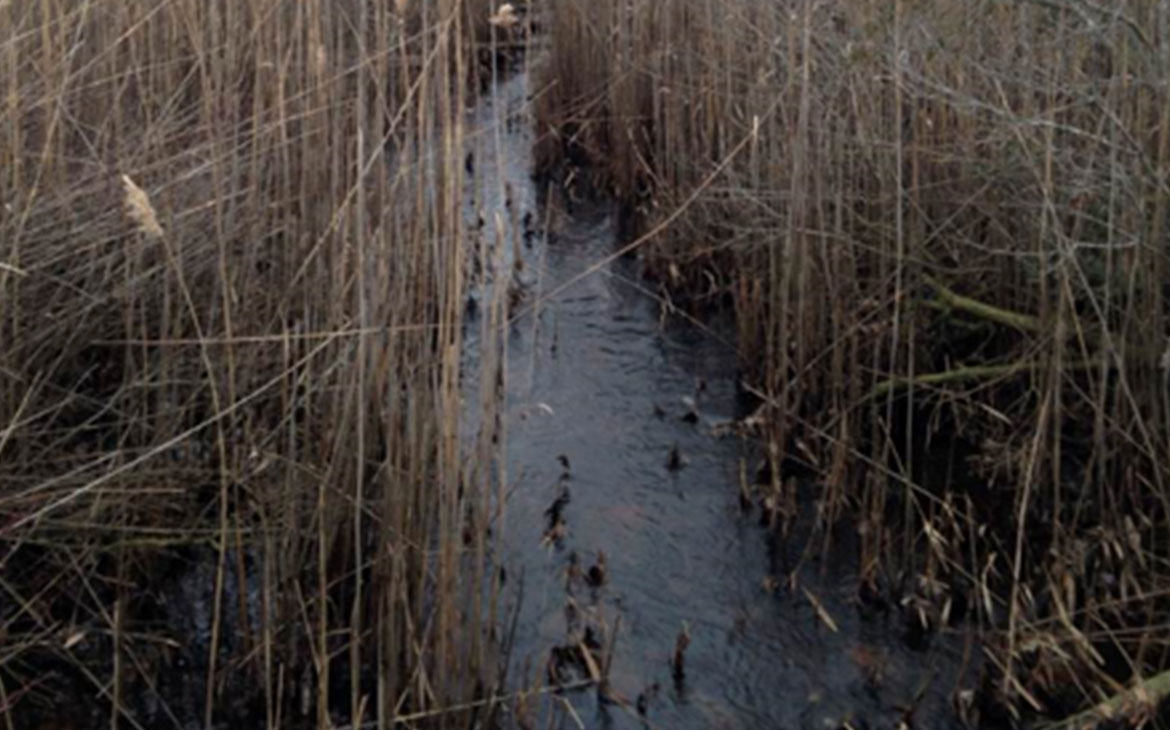The earth is getting warmer, sea levels are rising, and this is reflected in the occurrence of “ghost forests” in the Mullica Valley in southern New Jersey. The increase is obvious in most of our lifetimes and especially since Superstorm Sandy, when salty water was pushed far upstream. One result was the death of many trees, especially those that usually grow in freshwater bogs such as Atlantic white cedar. Once exposed, even for a few tidal cycles, they die, but remain standing because they are very rot resistant.

This rot resistance, plus long-term burial in sediments, preserves a record of their occurrence, even over thousands of years which is being studied in this collaborative effort with Drs. Ken Able, Ben Horton and Ph.D. graduate student Jennifer Walker. The ancient “ghost forests” are evident from shallow tributaries in the Mullica Valley at low tide from a kayak and with sidescan sonar at deeper depths in the Mullica River (to 15 ft).


Radiocarbon dates from Atlantic white cedar samples from salt water and intertidal and subtidal creeks verify the occurrence of these trees from the 5th to 16th centuries. Thus, they grew (sometimes for hundreds of years) and they were exposed to rising sea levels, especially since the Industrial Revolution, as sea levels have risen.

